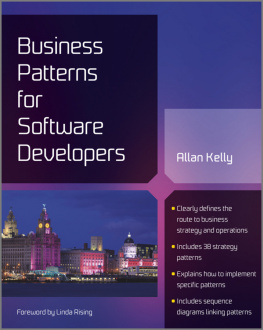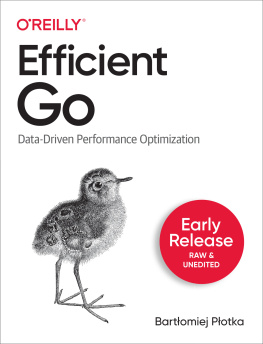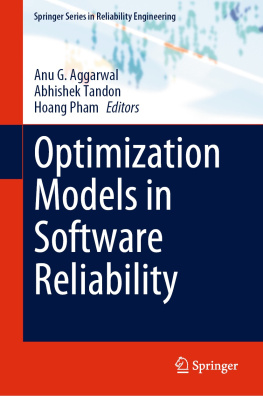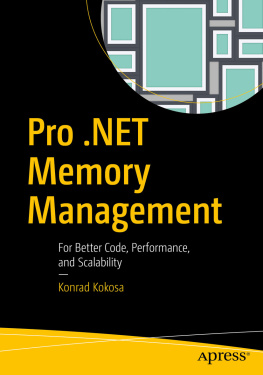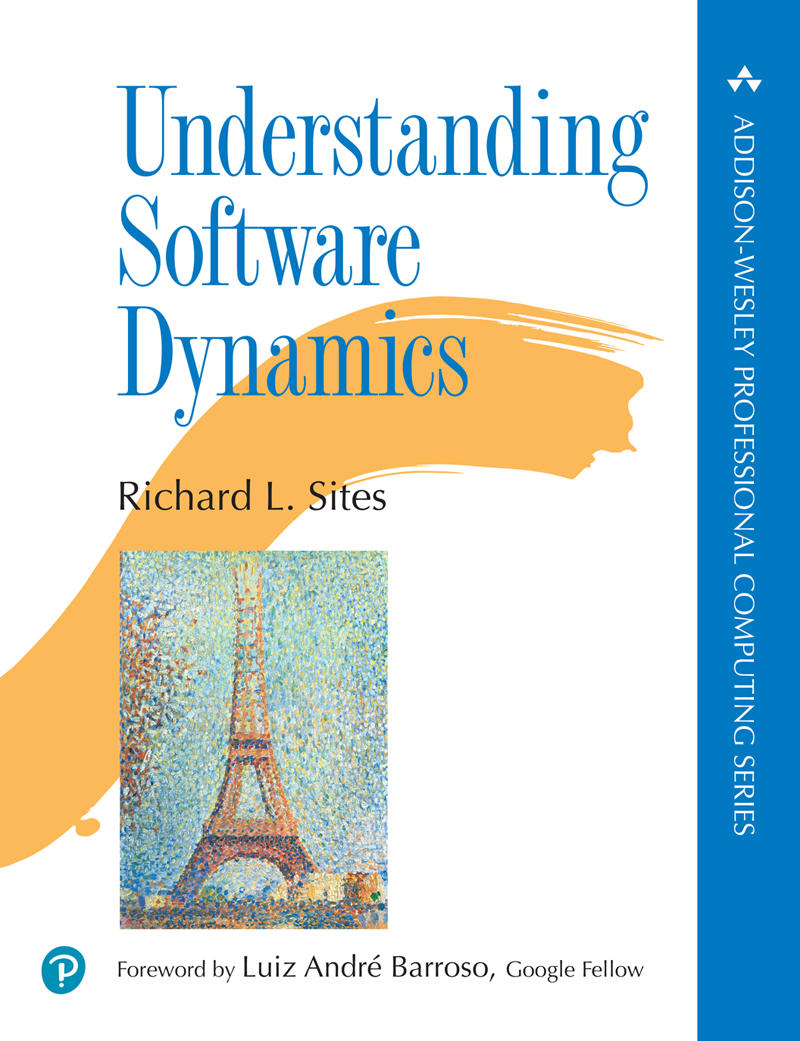ePUB is an open, industry-standard format for eBooks. However, support of ePUB and its many features varies across reading devices and applications. Use your device or app settings to customize the presentation to your liking. Settings that you can customize often include font, font size, single or double column, landscape or portrait mode, and figures that you can click or tap to enlarge. For additional information about the settings and features on your reading device or app, visit the device manufacturers Web site.
Many titles include programming code or configuration examples. To optimize the presentation of these elements, view the eBook in single-column, landscape mode and adjust the font size to the smallest setting. In addition to presenting code and configurations in the reflowable text format, we have included images of the code that mimic the presentation found in the print book; therefore, where the reflowable format may compromise the presentation of the code listing, you will see a Click here to view code image link. Click the link to view the print-fidelity code image. To return to the previous page viewed, click the Back button on your device or app.
Understanding Software Dynamics
Richard L. Sites

Boston Columbus New York San Francisco Amsterdam Cape Town
Dubai London Madrid Milan Munich Paris Montreal Toronto Delhi Mexico City
So Paulo Sydney Hong Kong Seoul Singapore Taipei Tokyo
Many of the designations used by manufacturers and sellers to distinguish their products are claimed as trademarks. Where those designations appear in this book, and the publisher was aware of a trademark claim, the designations have been printed with initial capital letters or in all capitals.
The author and publisher have taken care in the preparation of this book, but make no expressed or implied warranty of any kind and assume no responsibility for errors or omissions. No liability is assumed for incidental or consequential damages in connection with or arising out of the use of the information or programs contained herein.
For information about buying this title in bulk quantities, or for special sales opportunities (which may include electronic versions; custom cover designs; and content particular to your business, training goals, marketing focus, or branding interests), please contact our corporate sales department at or (800) 382-3419.
For government sales inquiries, please contact .
For questions about sales outside the U.S., please contact .
Visit us on the Web:
Library of Congress Control Number: 2021944164
Copyright 2022 Pearson Education, Inc.
Cover image: Art Heritage/Alamy Stock Photo
All rights reserved. This publication is protected by copyright, and permission must be obtained from the publisher prior to any prohibited reproduction, storage in a retrieval system, or transmission in any form or by any means, electronic, mechanical, photocopying, recording, or likewise. For information regarding permissions, request forms and the appropriate contacts within the Pearson Education Global Rights & Permissions Department, please visit www.pearson.com/permissions.
ISBN-13: 978-0-13-758973-9
ISBN-10: 0-13-758973-5
ScoutAutomatedPrintCode
Dedicated to the memory of Chuck Thacker,
a true Friend of the Electron who could do more
performance analysis in his head than most mortals.
Foreword
Dick Sites approaches problem-solving in a way that is shockingly rare these days: he finds it almost personally offensive to make guesses, and instead he insists on understanding a phenomenon before trying to fix it. When faced with the complexity of modern computer systems, including their hardware and software, most programmers approach performance debugging armed with a hunch about what is happening and proceed to try this, try that with the hope that this might yield a shortcut to a solution. Those of us who use this method are implicitly giving up on the possibility of truly grasping the complex interactions that could cause a program to underperform. The idea that something computer related is beyond understanding certainly doesnt occur to Dick. Often it is the case that basic tools that provide telemetry on a programs behavior are missing. In those cases Dick does the obvious thing (for Dick), which is to build them, including the visualization framework that compresses essential information about program execution into readable charts that shine a bright light into program dynamics.
When you go through Dicks remarkable career, it becomes clear why he is confident in his ability to understand complex computing systems. He became a programmer at age 10 in 1959, and his curiosity about computing resulted in a career where he studied or worked closely with giants of our field such as Fran Allen, Fred Brooks, John Cocke, Don Knuth, and Chuck Seitz, to name just a few. His accomplishments in industry are impressively broad: from co-designing the DEC Alpha Architecture to working on Adobes Photoshop and speeding up Google web services such as Gmail.
When I met Dick (joining DEC in 1995), he was already a legend of our field, and I had the unique pleasure of spending time with him during his Google tenure and witnessed his problem-solving approach firsthand. Readers of this book will delight in the clarity of Dicks writing and how performance debugging problems are described as mysteries to be solved through his knowledge of hardware/software interactions and sequences of clues unveiled by observing detailed traces of program execution. This is a book that will be immensely useful for programmers and computer designers alike, in no small part because there is no other book to compare it with. It is as unique as its author.
Luiz Andr Barroso, Google Fellow
Preface
Understanding the performance of complex software is difficult. It is even more difficult when that software is time-constrained and mysteriously exceeds its constraints now and then. Software professionals have pictures in their heads of their softwares execution dynamics: How the various pieces work and interact together over time and estimates of how long each piece takes. (Sometimes they even document those pictures.) But when time constraints are not met, we have few tools for understanding whyfor finding the root cause(s) of delay and other performance anomalies. This is a textbook for software developers and advanced students who work on such software.
Software dynamics refers not just to the performance or execution time of a single program thread but to the interactions between threads, between unrelated programs, and between an operating system and user programs. Delays in complex software often are caused by these interactionscode blocking and waiting for other code to wake it up, runnable code waiting for the scheduler to assign it a CPU to run on, code running slowly due to shared-hardware interference from other code, code not running at all because an interrupt routine is using its CPU, code invisibly spending much of its time in operating-system services or in page-fault handling, code waiting for I/O devices or network messages from other computers, and so on.


